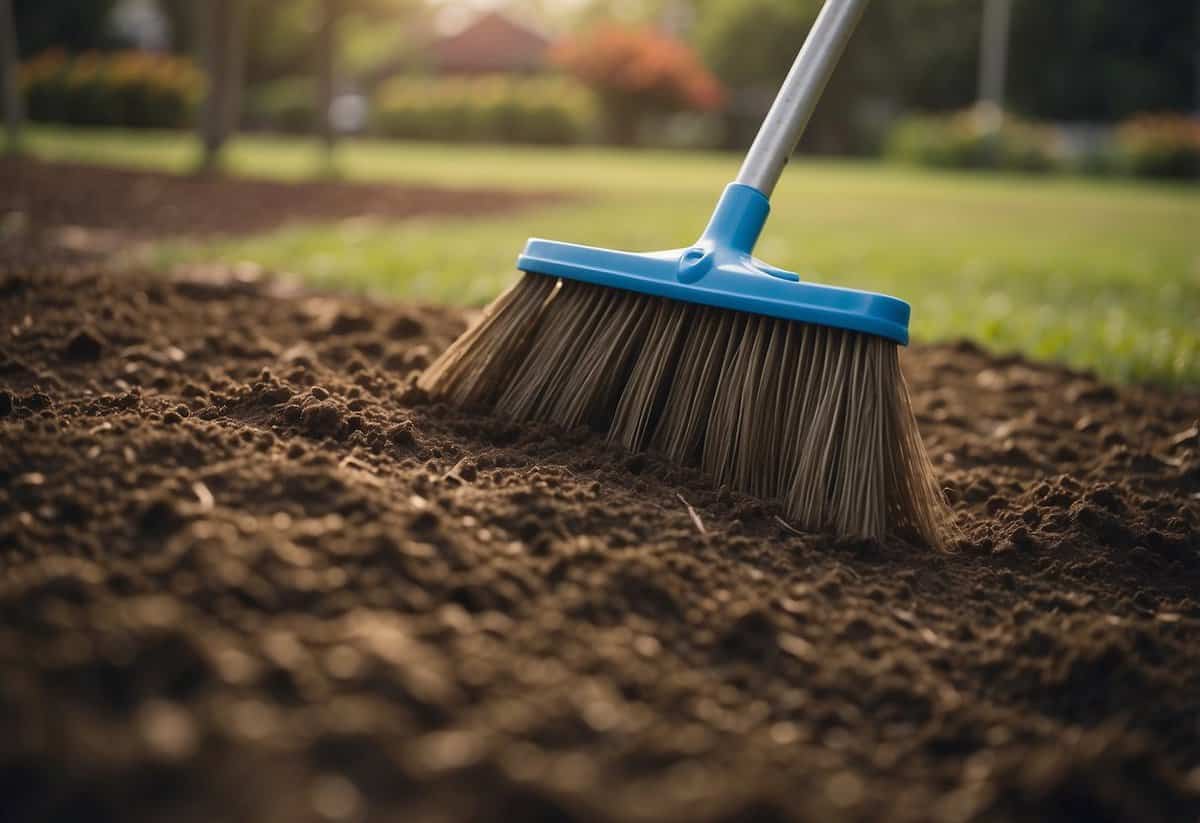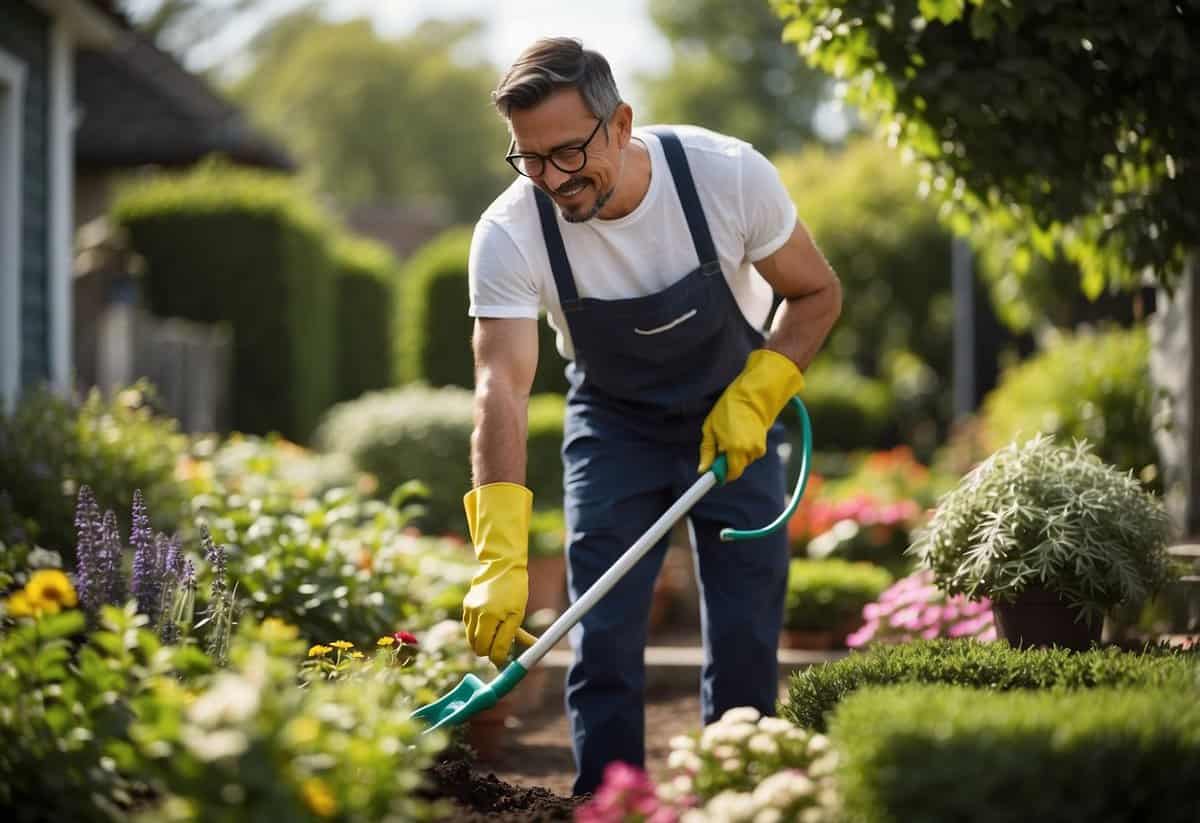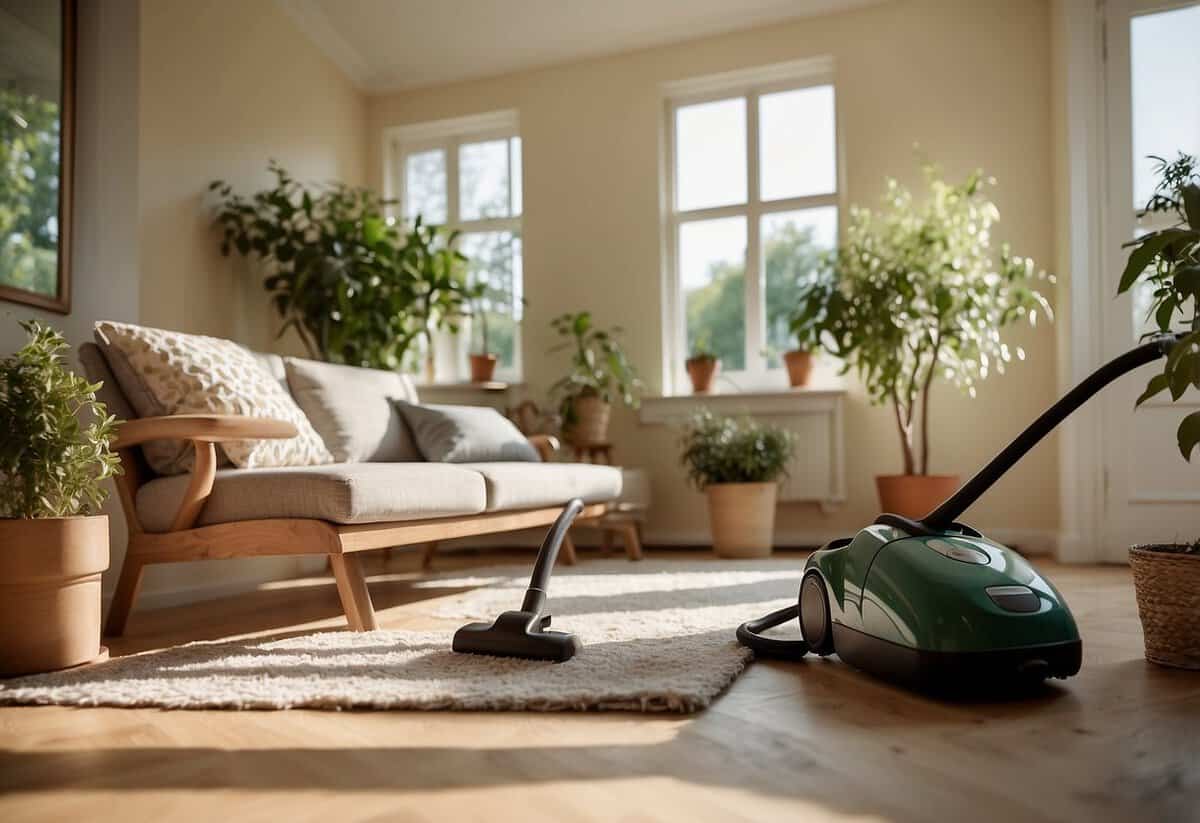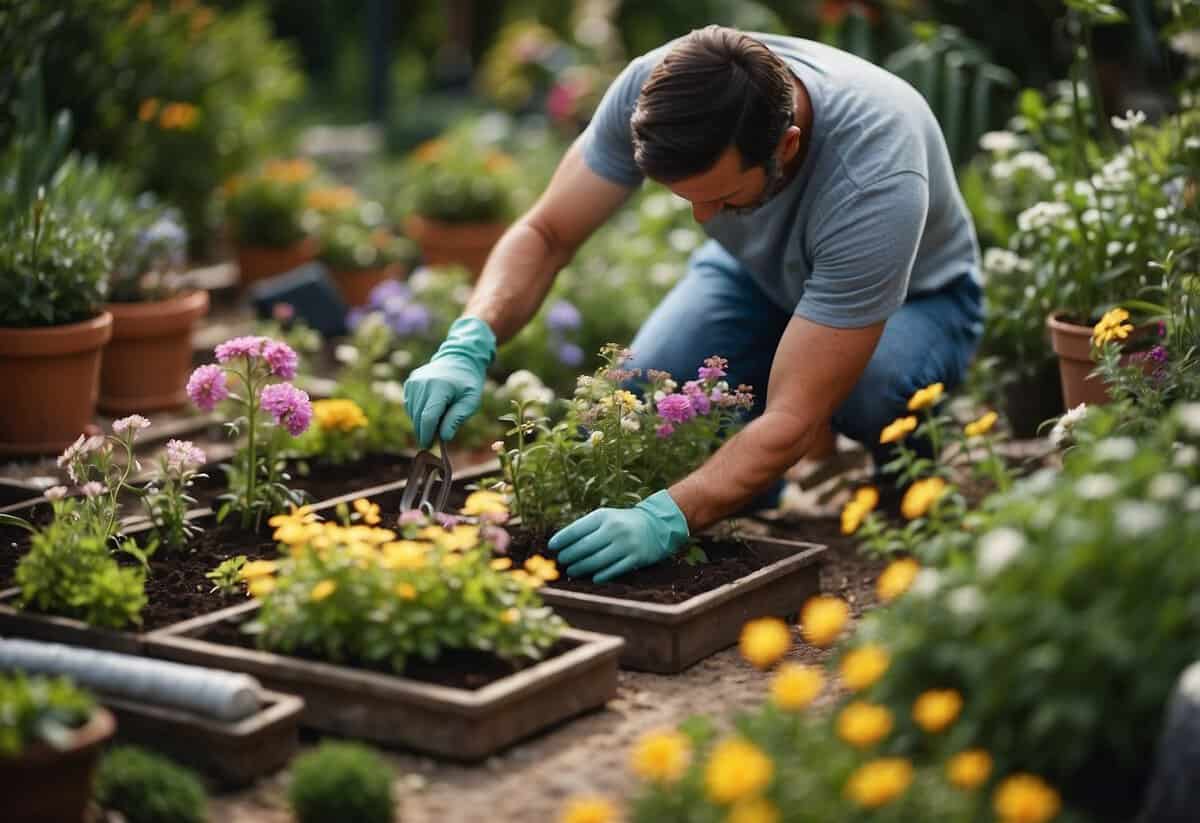Is Housework and Gardening Good Exercise? Fun Ways to Stay Fit at Home
Have you ever wondered if your housework and gardening chores count as good exercise? Many people find it hard to fit regular workouts into their busy schedules. The good news is that your daily activities, like cleaning and gardening, can help keep you fit.

Housework and gardening can indeed provide effective physical activity. For example, 30 minutes of mowing the lawn with a hand mower can burn around 215 calories. Tasks like vacuuming, scrubbing floors, and carrying laundry up and down the stairs can also get your heart rate up and help you stay active.
Gardening is another excellent way to boost your fitness. According to the CDC, gardening can be as effective as a gym workout. Digging, planting, weeding, and other gardening activities work various muscle groups and improve strength and endurance. So next time you’re tidying up your home or tending to your garden, remember you’re also doing your body a favor.
Health Benefits of Physical Exercise

Regular physical exercise offers numerous benefits, from improving fitness levels to enhancing mental well-being. Understanding these benefits can help you lead a more active and healthier life.
Impact on Overall Health and Fitness
Physical exercise helps your body in many ways. It strengthens your heart and improves your breathing rate, making everyday activities easier. Regular exercise can reduce your risk of chronic illnesses like heart disease and diabetes.
Activities like walking, jogging, and swimming boost your fitness levels. They help you burn calories and lose weight. Exercise also improves your muscle strength and flexibility, making you less prone to injuries.
Reducing Sedentary Behaviors Through Active Living
Sedentary behaviors, such as sitting for long periods, can be harmful to your health. They increase the risk of conditions like obesity and heart disease. Adding physical activity to your daily routine helps counter these effects.
You can replace sedentary time with activities like housework, gardening, or walking. Engaging in moderate to vigorous physical activity can improve your mood and energy levels. Even small changes, like standing while talking on the phone, can make a difference.
Guidelines and Recommendations for Physical Activity
To gain the most health benefits, follow the CDC’s physical activity guidelines. Adults should aim for at least 150 minutes of moderate aerobic activity or 75 minutes of vigorous activity each week. This can include activities like brisk walking or cycling.
Incorporate muscle-strengthening exercises at least two days a week. These can be weight lifting, resistance band exercises, or body-weight activities like push-ups. Staying active according to these guidelines helps you maintain a healthy weight, improve your cognitive functions, and enhances your overall quality of life.
Housework as a Form of Exercise

Housework, such as vacuuming and cleaning, can contribute to your daily physical activity. While these tasks do burn calories, the intensity and duration of the chores play crucial roles in determining their effectiveness as a workout.
Intensity and Duration of Household Chores
The intensity of housework varies depending on the task. Vacuuming and scrubbing floors can be considered moderate-intensity activities. Tasks like folding laundry or dusting are generally low intensity.
For these activities to count as effective exercise, you should aim for at least 30 minutes of moderate-intensity chores a day. According to a study by BMC Public Health, performing any form of physical activity for 150 minutes a week can help improve health.
While housework alone is beneficial, it is often recommended to combine it with more traditional exercise, like walking or biking, for better results.
Comparing Calories Burned in Common Housework Tasks
You can burn a significant number of calories through housework. Here’s a look at some common chores:
| Chore | Calories Burned (30 mins) |
|---|---|
| Vacuuming | 90-120 calories |
| Mopping | 120-150 calories |
| Gardening | 150-200 calories |
| Sweeping | 110-130 calories |
| Laundry (moving) | 70-100 calories |
The University of Ulster found that although these numbers are lower than those for traditional exercises, they still contribute to overall calorie expenditure. Maintaining a balanced regimen that includes both household chores and other forms of exercise is key to achieving weight management and fitness goals.
Gardening for Fitness and Strength

Gardening offers a great way to exercise outdoors, engaging various muscle groups and providing both aerobic and resistance benefits. This hobby can improve your strength and endurance while connecting you with nature.
Muscle Groups Worked by Gardening Activities
Gardening involves activities like mowing the lawn, digging, and lifting. These actions work multiple muscle groups throughout your body.
- Arms and Shoulders: Raking, pulling weeds, and pushing wheelbarrows help tone your arms and shoulders.
- Legs: Squatting and kneeling for planting or weeding engage your thighs, calves, and glutes.
- Core: Bending, twisting, and lifting heavy soil or plants strengthen your abdominal muscles and lower back.
Incorporating these activities into your routine gives all major muscles a productive workout.
Aerobic and Resistance Benefits of Outdoor Gardening
Spending time in the garden provides both aerobic and resistance benefits.
- Aerobic Exercise: Activities like mowing, raking, and weeding can raise your heart rate. Just 30-45 minutes can burn up to 300 calories.
- Resistance Training: Digging, pushing a lawnmower, and lifting bags of soil build muscle strength. These actions require effort, similar to using weights at the gym.
By mixing different gardening activities, you get a comprehensive workout that improves both cardiovascular health and muscle strength.
Planning Your Routine

Integrating housework and gardening into your exercise regime can be a smart way to stay fit. These activities help you save time and money compared to traditional workouts. Here’s how to plan your routine to make the most of your daily tasks.
Incorporating Housework and Gardening into Your Exercise Regime
You can easily turn housework and gardening into a workout by scheduling these activities into your weekly routine. Think about setting fixed times each week for tasks like vacuuming, mopping, or weeding.
These activities can replace a gym session. For example, vacuuming can be like a brisk walk, while raking leaves can be as effective as jogging.
Start with a quick warm-up, such as stretching or a short walk around your garden, to prepare your muscles.
Example Routine:
- Monday: Mop floors (30 min)
- Wednesday: Weed garden (45 min)
- Friday: Rake leaves (30 min)
Breaking tasks into small chunks can make them more manageable and ensure you’re active throughout the week.
Strategies for Maximizing Activity Levels
Maximize your physical activity by adding extra movement to your chores. For example, when doing laundry, add a few squats every time you pick up a pile of clothes.
When gardening, try activities that require more effort. Push mowing the lawn burns more calories than using a riding mower. Combining these tasks with some traditional exercises like dancing can also be beneficial.
Taking short breaks for stretching and hydration is essential to prevent injuries and keep your energy levels up.
Tips for Increasing Activity:
- Use a step counter to track your movements.
- Listen to upbeat music to make chores feel more like a fun workout.
- Aim for at least 30 minutes of active chores each day.
These strategies can make your daily tasks a crucial part of your fitness regime, ensuring you stay healthy and active without needing extra time.
Cultural and Psychological Perspectives

Housework and gardening offer unique benefits that go beyond physical health. They can influence your exercise habits based on cultural norms and improve your mental wellbeing.
Understanding the Role of Culture in Exercise Habits
Culture plays a crucial role in shaping how you approach physical activities like housework and gardening. In some cultures, these tasks are seen as a normal part of daily life, especially for women. For instance, in Northern Ireland, many women incorporate housework into their fitness routines.
Adults might overestimate the physical benefits of these activities, considering them as enough to replace traditional exercises like cycling or running. However, while chores like squats, lunges, and bending at the knees can keep you active, they may not match the intensity of structured workouts.
Researchers also highlight that cultural perceptions can influence what types of activities are deemed acceptable or valuable. In some regions, gardening is celebrated as a community effort, enhancing social ties and promoting a collective sense of wellbeing. This cultural backdrop can make these tasks more appealing and fulfilling.
Mental Wellbeing and Its Relationship with Physical Exercise
Engaging in housework and gardening has significant psychological benefits. These activities can lower stress and boost mood by increasing the production of endorphins, the brain’s feel-good chemicals. Tasks like digging, planting, and maintaining a garden offer a sense of accomplishment and connection to nature.
For older women and sedentary adults, these activities can be a lifeline. Gardening and housework provide a manageable level of physical activity, which is linked to reduced risks of depression and anxiety.
Having a garden or maintaining your home can also give you a sense of purpose and routine. These psychological lifts contribute to greater overall mental health and can even extend lifespan by reducing risks associated with sedentary lifestyles. More than just chores, these routines become meaningful rituals that enhance your quality of life.







